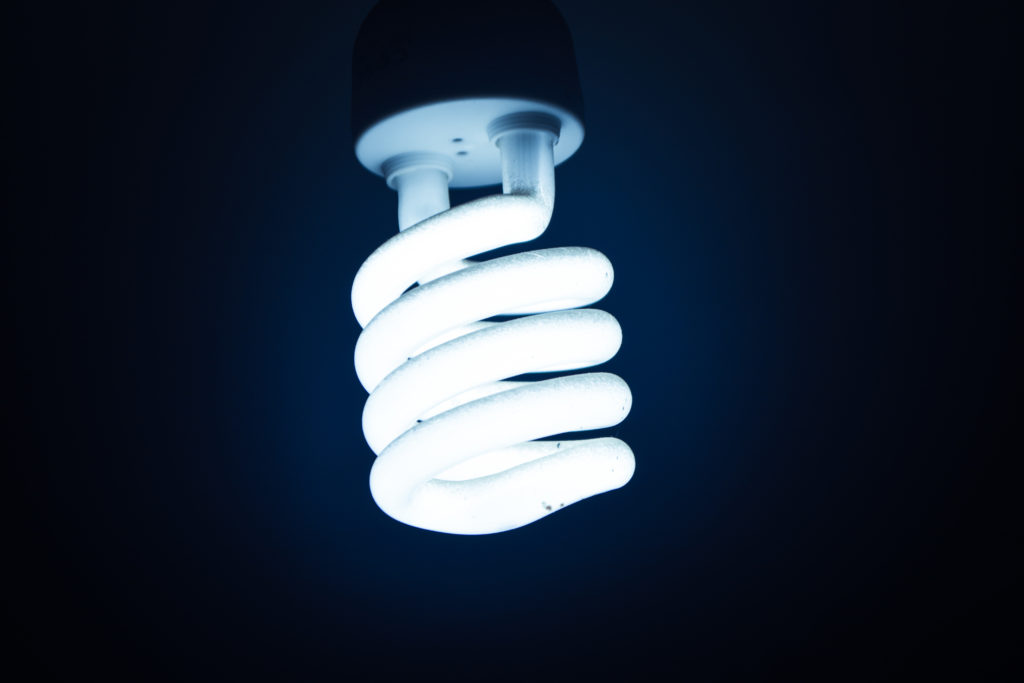9.16.19
Choosing the right LED light

LED light bulbs save energy and money, but it’s not always easy to figure out which one will work best for you. Here’s what you need to know.
LED lighting has been edging incandescent bulbs off store shelves for good reason: They last 25 times longer and use up to 80% less energy. The higher initial cost of an LED bulb is recouped many times over its lifetime. However, replacing an incandescent bulb with an LED is not as simple as swapping a 60-watt bulb out for a 60-watt bulb. Here’s what you need to know about choosing LED lights to get the right brightness and color.
Choose LEDs by lumens, not watts
Lumens measure the light emitted from a bulb. Since LEDs are more energy efficient than incandescent bulbs, they don’t need as many watts to create the same level of light.
Energy.gov offers these guidelines:
- To replace a 100-watt (W) incandescent bulb, look for a bulb that gives you about 1,600 lumens. If you want something dimmer, go for less lumens; if you prefer brighter light, look for more lumens.
- Replace a 75W bulb with an energy-saving bulb of about 1,100 lumens.
- Replace a 60W bulb with an energy-saving bulb of about 800 lumens.
- Replace a 40W bulb with an energy-saving bulb of about 450 lumens.
Color and ambiance
The color spectrum of a light bulb is what creates the “feel” of the light emitted. Early LED lights were often criticized for being too harsh and bright. Manufacturers have addressed this problem and now indicate light color on packages.
Light color is measured on the Kelvin (K) scale. The lower end of the scale creates a yellowish light, while the higher end crates a bluish light. For example, a candle’s warm light is 1,900K and direct sunlight is 4,800K.
According to Energy Earth, bulbs from 2,700-3,000K emit a warm, soft light similar to that emitted by incandescent bulbs. 3,500-4,100K create a cool, bright white light. Bulbs of 5,000-6,500K are the brightest and closest to daylight.
LEDs for dimmers
If you use a dimmer switch, choose an LED made specifically for this purpose. If you use an LED that’s not dimmer-compatible, it may not dim and the bulb could buzz or flicker. Also, using a dimmer with a non-dimmable light bulb will shorten the bulb’s life.
The flexibility of LEDs
With their low energy consumption and cool operating temperatures, LED offers endless design possibilities.
Strip lights (also called LED tape or ribbon lights) are great for lighting under cabinets, shelves and stairs. You can even get battery-powered LED strip lights for places where hard wiring is not convenient.
Colored LEDs can be used to create ambiance. They’re also a welcome glow from behind a TV and can make the screen appear to float.
Shopping reminder
When shopping for LED bulbs, pay attention to lumens, color and dimmability, and make sure the shape and size fits your existing fixture or lamp.
Consumers helps more than 1,000 members finance land, first and second homes, and home improvement projects each year. When you need a mortgage or home equity line of credit, call us at 800-991-2221. We’re here to help you get the home of your dreams!
![]()



I like..
i love them all
If you want to really dig in to the ins and outs of LEDs, there is certainly much more we can cover, from choosing the right brightness to retrofitting your current light fixtures and more.